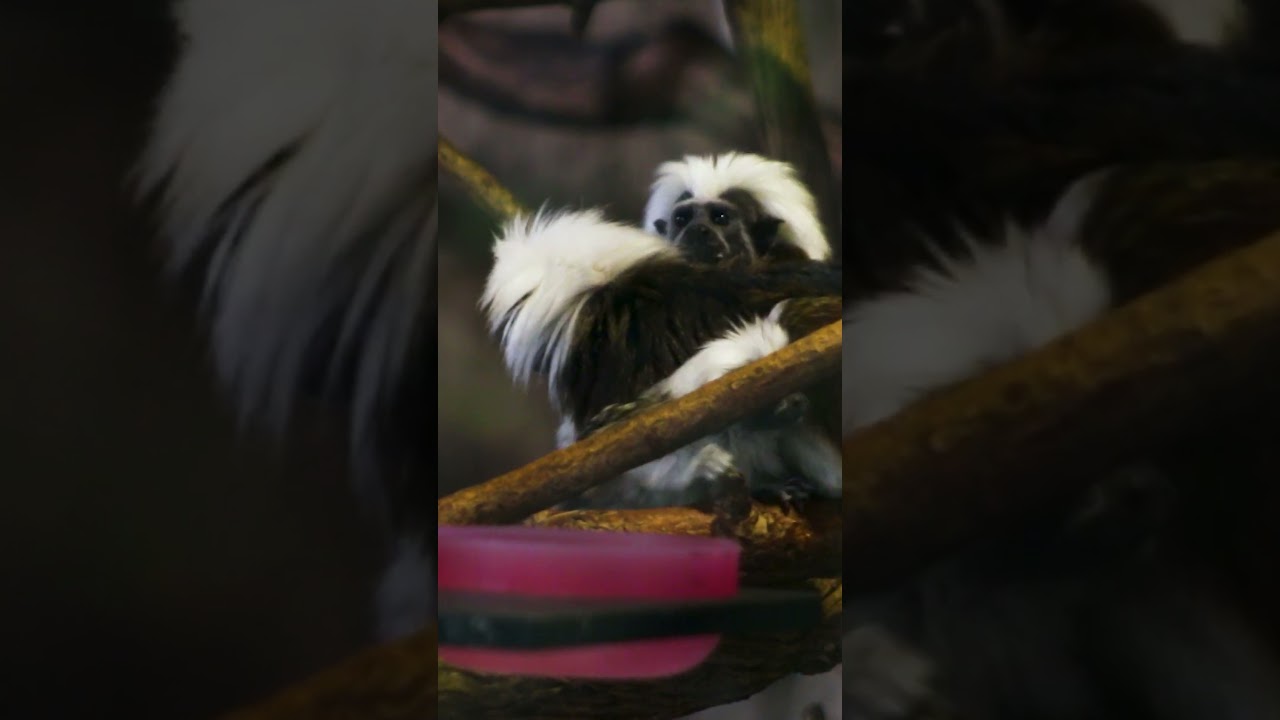– Introduction to Cotton-top Tamarins and their habitat
– Insights into the behavior and social structure of Cotton-top Tamarins
– The conservation status and efforts for Cotton-top Tamarins
– The role of Blank Park Zoo in Cotton-top Tamarin conservation
– The educational impact of zoos on wildlife awareness and conservation
Cotton-top Tamarins, a highly distinctive and engaging species of small primates, have captured the interest of both the public and conservationists alike. Residing primarily in the tropical forests of northwestern Colombia, these tamarins are renowned for their striking white fur crest, from which they derive their name. This article delves into their natural habitat, complex social behavior, the critical conservation status they face, and how institutions like Blank Park Zoo play a pivotal role in their preservation and public education.
Cotton-top Tamarins inhabit Colombia’s dense, humid rainforests, thriving in areas abundant in fruit trees and vegetation, providing food and shelter. These primates are arboreal, meaning they spend most of their lives in the trees, deftly moving through the forest canopy. Their omnivorous diet consists of fruit, insects, and occasionally small vertebrates, reflecting their adaptability to the diverse resources their environment offers.
The social structure of Cotton-top Tamarins is both fascinating and complex. They live in small, matriarchal groups typically comprising 3 to 9 individuals. These groups are centered around a breeding pair, usually the group’s dominant female and her mate, alongside their offspring and possibly a few unrelated individuals. Communication among group members is sophisticated, involving a rich repertoire of vocalizations, facial expressions, and body postures. Such complex social interactions highlight the intelligence and adaptability of these primates, making them a subject of keen interest for behavioral researchers.
Faced with a critical conservation status, Cotton-top Tamarins are classified as Critically Endangered by the International Union for Conservation of Nature (IUCN). Their numbers have dwindled dramatically due to deforestation, habitat fragmentation, and illegal pet trade. These threats have reduced their natural habitat and isolated populations, making it difficult for these animals to find mates and reproduce. To ensure their survival, conservation efforts are urgently needed to address these challenges, involving habitat preservation, reforestation, and anti-poaching measures.
Blank Park Zoo has emerged as a crucial ally in conserving Cotton-top Tamarins. By participating in species survival plans and offering a sanctuary for captive breeding, the zoo contributes to the global effort to stabilize its population. Furthermore, the zoo serves as a platform for public education and awareness, allowing visitors to learn about these primates and their challenges in the wild. Through interactive exhibits and educational programs, Blank Park Zoo fosters a connection between zoo-goers and wildlife conservation, inspiring actions that support biodiversity and ecosystem preservation.
In addition to conservation efforts, zoos like Blank Park Zoo play a vital role in scientific research. Studying Cotton-top Tamarins in a controlled environment provides invaluable insights into their behavior, physiology, and genetics. This research not only aids in their conservation in the wild but also enhances our understanding of primate biology and ecology, which has broader implications for conservation science.
The educational impact of zoos on public awareness cannot be overstated. By bringing people face-to-face with wildlife, zoos create unique opportunities for engagement and learning. Educational programs designed around Cotton-top Tamarins and other endangered species highlight the importance of conservation efforts and the role each individual can play in preserving our planet’s biodiversity. Engaging the public meaningfully contributes to a more informed and proactive society that is ready to support conservation initiatives.
The plight of Cotton-top Tamarins underscores the importance of integrated conservation strategies encompassing habitat protection, law enforcement to combat illegal trade, and public education to foster environmental stewardship. Institutions like Blank Park Zoo are at the forefront of these efforts, leveraging their resources and reach to make a significant impact. Through collaborative efforts between conservation organizations, governments, local communities, and the broader public, there is hope for this remarkable primate species’s recovery and continued survival.
In conclusion, Cotton-top Tamarins offers a compelling case study on the challenges and triumphs of wildlife conservation. Blank Park Zoo, among other institutions, plays a critical role in their survival, blending conservation action with education to ensure these unique primates thrive in captivity and the wild. Their continued existence depends on the collective efforts of the global community, highlighting the interconnectedness of all beings and the importance of preserving our natural world for future generations.
*****
Source Description
Caitlin and Clarke might be gaining more independence as they leap through the branches of their habitat. But know mom and dad are always there to run back to.

